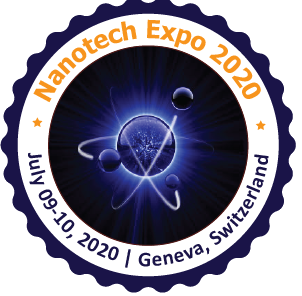
Masood Ahmad
Higher College of Technology-Muscat, Oman
Title: Nanomaterials for Microwave Dielectric and Fuel cell Applications
Biography
Biography: Masood Ahmad
Abstract
Increasing demand for new and advanced nanomaterials/materials has motivated a significant research in wireless communication technology and solid oxide fuel cell applications. The present investigation discusses the synthesis and dielectric properties of three series of oxides of the formula La2BaTi2M1-xCuxO9, (where M = Mg, Zn and Cd). All the compositions crystallize in the disordered cubic perovskite structure. Suitable substitution at both A and B sites lead to enhancement in the dielectric properties at high frequencies. The relative permittivity and loss tangent have been measured at X-band (8.2-12.4 GHz) and Ku-band (12.4-18 GHz) frequencies. The oxides show a dielectric constant of 20-30 while the dielectric loss is quite low in the order of 10-3-10-4 (at 500 kHz) and 10-2 at X and Ku-band. There is scope for further investigations in these systems to realize useful materials for microwave applications. Moreover, Homogeneous nano crystalline NiO-Ce0.9Ln0.1O2-δ (Ln = La, Sm and Gd and Pr) composite anode and nano crystalline Ce0.9Gd0.1O2-δ electrolyte material has been successfully synthesized by citrate precursor method. LSCF has been synthesized by conventional solid state method and used as cathode material in our studies. The synthesized powders have been characterized by powder X-ray diffraction, microscopy and surface area studies. The average crystallite size of the anode materials has been found to be in the range of 5-15 nm by transmission electron microscopy. Highly dense electrolyte and porous electrode materials have been observed by field emission scanning electron microscopy and confirmed by BET surface area studies. Three cells have been fabricated successfully. The electrochemical performance of the single cells with configuration NiO-Ce0.9Ln0.1O2-δ (Ln = La, Sm and Gd) (anode) // Ce0.9Gd0.1O2-δ (electrolyte) // La0.8Sr0.2Co0.2Fe0.8O3 (LSCF) (cathode) have been evaluated using humidified hydrogen as the fuel and air as the oxidant. It has been observed that the single cell containing NiO-Ce0.9Gd0.1O2-δ nano composite anode shows better performance with maximum power density of 302 mW cm-2 and open circuit voltage of 1.012 V at 500 °C compared to other two cells. The difference in the performance of the cells containing Ni-LDC and Ni-SDC anode as compared to Ni-GDC anode is due to changes in the microstructure and crystallite size of the anode which affects the electrochemical performance of the cells. The performances of all the cells containing nano composite powders are suitable anode materials for low temperature SOFCs

